Saudi, Iranian Foreign Ministers Plan To Meet During Ramadhan
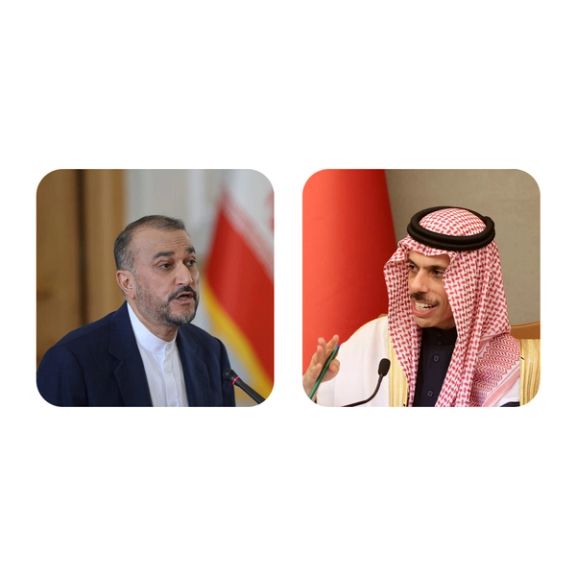
Iranian and Saudi foreign ministers have agreed to meet during the month of Ramadhan to hold talks over restoring diplomatic ties under a deal reached in March.

Iranian and Saudi foreign ministers have agreed to meet during the month of Ramadhan to hold talks over restoring diplomatic ties under a deal reached in March.
Saudi Foreign Minister Prince Faisal bin Farhan Al Saud and his Iranian counterpart, Hossein Amir-Abdollahian spoke by phone and agreed to the meeting, the Saudi state news agency SPA said on Monday. It was their second phone conversation in a few days, SPA said.
"During the call, a number of common issues were discussed in light of the tripartite agreement that was signed in the People's Republic of China. The two ministers also agreed to hold a bilateral meeting between them during the ongoing month of Ramadan," SPA said.
Iran’s government news agency IRNA briefly confirmed the phone call and said the two ministers discussed their upcoming meeting during Ramadhan, which is in its first week. They also discussed “the constructive path of relations between the two countries,” IRNA said.
Tehran and Riyadh announced a Chinese-brokered deal March 10 to restore ties after seven years. The deal was seen as a major development in the Persian Gulf region and the wider Middle East, especially with China playing the role of mediator.
The deal also seems to be an agreement going farther than just restoring diplomatic relations, with Tehran expected to reduce its military assistance to Houthi forces in Yemen and help the peace process in the war-thorn country.
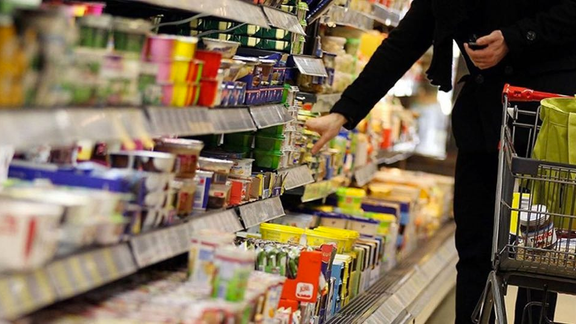
The Central Bank of Iran announced Sunday the annual inflation rate stands at 46.5 percent but did not mention the point-to-point inflation of the last month of the Iranian year.
Although the official inflation rate announced by the authorities is usually less than what it seems in the market, even a 46.5-percent inflation is among the highest in Iran in more than 30 years.
The bank did not disclose the point-to-point inflation for the last Iranian calendar month, which ended on March 21, but it provided the price index of the month, from which the inflation can be extracted. The price index for the month was 794.3, which means a 64-percent point-to-point inflation rate compared to the corresponding period of the previous year at 484.6. It is the second time Iran recorded such a figure since World War II.
The latest CBI report also lacks the price index changes of different groups of goods and services, unlike the usual procedure. Moreover, the Statistical Center of Iran (SCI) has not published its inflation report for the past month. SCI has been the only government entity regularly announcing the inflation rate in the past four years.
SCI said on Sunday that the reason behind the delay is the process of changing the “base year” from the year 1395 to 1400, which ended on March 20, 2022. A base year is used for comparison in the measure of a business activity or economic or financial index. It can also describe the starting point from a point of growth or a baseline for calculating financial transactions.

"Due to the changes in the content of the market basket over time, according to international recommendations, it is necessary to change the base year at certain time intervals,” the Statistical Center of Iran said.
Considering the devaluation of Iran’s currency rial from 260,000 against one dollar to about 500,000 this month, the inflation rate is expected to hit new highs in coming months.
The inflation rate factors in numerous commodities and services but the one most important for Iranians is increasing food prices, with some categories doubling or tripling in the past 12 months. Official figures show there was a sharp increase in food prices and most items witnessed a more-than 50 price inflation.
The Islamic Republic has been struggling with high inflation since 2019, but the raging inflation in the past Iranian year which ends on March 20, was seriously different from previous years. Last May, the government eliminated an annual food import subsidy of at least $10 billion, which immediately led to steep price increases.
This was followed by a fall in the value of the national currency, making imports more expensive for the population. The government called its decision to scrap the food subsidy “economic surgery,” but it had no other plans to control prices. Immediately following the announcement, food prices jumped, with some items doubling or tripling in a matter of hours. Pasta is 137 percent more expensive than 12 months ago, while meat prices went up by 76 percent and milk by 80 percent. According to SCI, in some months the inflation rate for food and beverages hit 87%.
In his New Year speech on March 21, Supreme Leader Ali Khamenei dubbed the new year as “the year of bringing inflation under control”, a promise also repeated by President Ebrahim Raisi, but reminiscent of similar slogans in previous years.
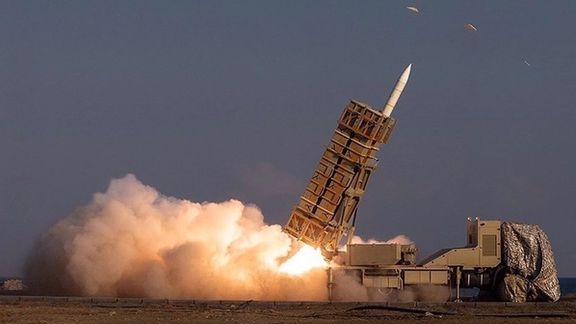
Iran has once again implicitly threatened US forces in Syria, after drone and missile attacks on Thursday and Friday by militias under the command of the IRGC.
A triumphant article published Sunday in the official IRNA news agency was headlined, “25 American bases in Syria await the missiles of the Resistance.”
Iran’s Islamic regime calls its proxy forces in the region “the resistance front”.
IRNA said that “Yankees did not sleep all night” last night out of fear of fresh attacks by the “resistance.” It added that so far militias have fired 60 rockets, missiles and a suicide drone on US bases.
“All American occupiers were on alert and Yankee helicopters and drones were patrolling all night,” the agency added.
The United States maintains a small force of around 900 servicemen and an undisclosed number of contractors at a few bases in eastern and southern Syria, but IRNA claimed there are 22 large and 3 small “illegal” bases.
After the first attack on a US base on Thursday that killed a contractor and wounded several servicemen, the US retaliated by bombing installations used by the Iranian militia.
Iran’s national security council Saturday warned the US against further attacks, threatening immediate retaliation. The foreign ministry in Tehran also issued a statement at the same time calling the US retaliatory strike a “terrorist aggression.”
The article went on to repeat previous unsubstantiated accusation that the US created the Islamic State group (ISIS) to destabilize Syria. It also said that the US maintains a base in southern Syria to deny land access from Iran to Syria and Lebanon, not to allow “the reinforcement of the resistance front.”
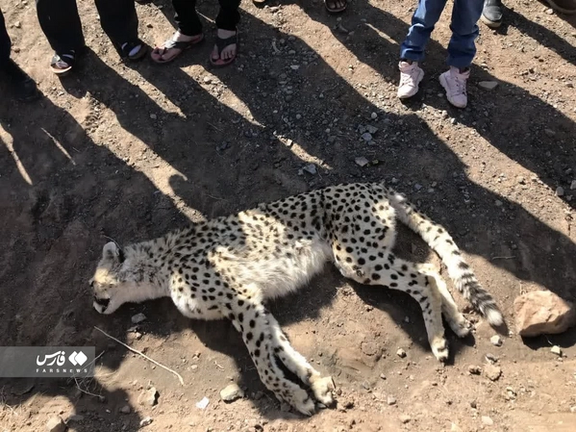
Iranian officials say another Asiatic cheetah has been killed in a car accident near the city of Miami in Semnan Province, east of Tehran.
Director General of Environmental Protection of Semnan province, Bahram Ali Zahiri said Sunday that in the autopsy performed on the dead cheetah, it was revealed that she was pregnant with three cubs.
The Asiatic cheetah is a critically endangered subspecies currently only surviving in Iran. It lives in protected areas in the eastern-central arid region of Iran, where the human population density is very low.
In December 2017, fewer than 50 individuals were thought to be remaining in three subpopulations that are scattered over 140,000 km2 (54,000 sq mi) in Iran's central plateau.
As of January 2022, the Iranian Department of Environment estimates that only 12 Asiatic cheetahs, 9 males, and 3 females, are left in Iran.
The news agencies in Iran have reported that during the last 10 years, at least 20 cheetahs have been lost on the country’s roads.
Although 52% of recorded deaths of cheetahs are related to road accidents, Iran’s Department of Environment has not taken any action to make roads safer.
In other countries, roads have been fenced to protect animals and wide overpasses have been built in the natural habitats of animals for their safe passage.
However, Iranian officials say there is no budget allocated to erect fences around roads or install speed cameras for cars in the main habitat of Asiatic cheetah.
Iran has arrested and jailed 8 ecologists who were helping with wildlife protection on unfounded charges and after sham trials.
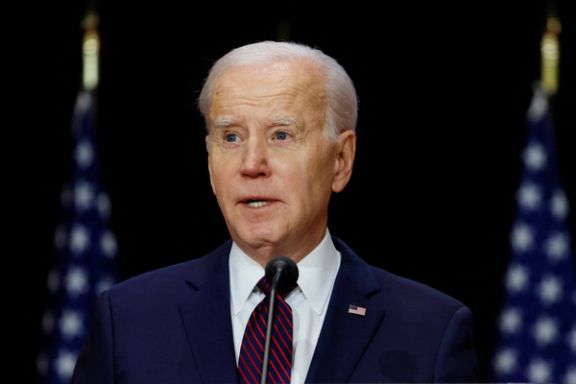
As Iran’s tit-for-tat war with the US becomes more vocal, the Biden administration’s hand is being forced to take firmer action against the regime and its proxies.
Following an Iranian attack on US troops, Gabriel Noronha, the former State Department Iran envoy tweeted: “Iran cannot match us on the escalation ladder. But as long as we play tit-for-tat with their proxies, Iran gets a pretty good deal.
“If Iran wants to kill Americans overseas and at home, we could make them pay where it hurts them: their pocketbooks.”
In a strong warning to the US, which carried out a rare strike on Iranian-linked bases in Syria last week, Iran has openly defended its militia there, its regional proxies an issue on which it prefers to stay silent.
Foreign ministry spokesperson Nasser Kanaani told state media last week: "Iran's military advisers have been in Syria at the request of the Syrian government to help this country fight terrorism, and shall remain by Syria's side to help establish peace, stability and lasting security.”
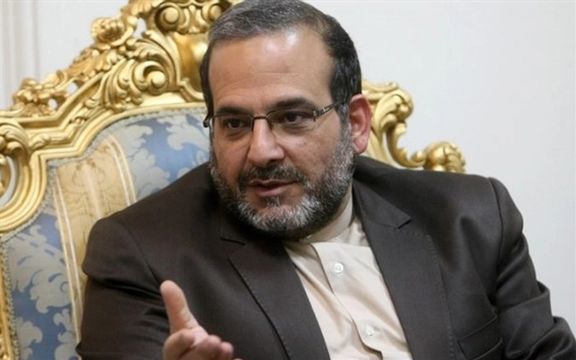
Supreme National Security Council spokesman, Keyvan Khosravi, responded with equally strongly worded threats, showing a united front in allegiance with its militia in Syria. “Any pretext to attack bases created at the request of the Syrian government to deal with terrorism and Islamic State elements in this country will be met with an immediate counter-response,” he said.
It is an interesting turnaround, not ignored by the world’s Iran watchers. Jason Brodsky, the policy director at United Against A Nuclear Iran, tweeted: “In the past these threats came from an operations room with a vague name “Allies of Syria”, which preserved plausible deniability for Tehran. But in a sign of how emboldened Islamic Republic feels Iran’s SNSC is going public quite clearly with threats.”
The Syrian Observatory for Human Rights claims the US strike killed eight pro-Iranian fighters. Thursday’s attack was one of the deadliest exchanges between the US and Iranian-aligned forces in years, retaliation for a drone drone attack that left one American contractor dead and another wounded along with five injured US troops.
Semantics on the nature of the attack were typically murky. Washington said the drone used in the attack was of Iranian origin while Iran claimed the site the US hit was ‘civilian’, a rural development centre and a grain centre near a military airport.
Speaking on a state visit to Canada last week, Biden reiterated that “the United States does not, does not seek conflict with Iran,” but said Iran and its proxies should be prepared for the US “to act forcefully to protect our people” and warned “we are not going to stop”.
Biden chooses his words carefully. While Tehran’s growing entrenchment in Syria has drawn regular Israeli air strikes, American aerial raids are rare. The US has been raising the alarm about Iran's drone program but critics say the Democrats are sitting tight to try and cling on to the last shreds of hope for reviving the nuclear deal, the JCPOA, which collapsed last year amidst Iranian intransigence.
Iran is obviously undeterred by threats to crack down on the regime’s militia, and Biden’s critics are pushing for more affirmative action.
When doing the numbers, it is clear Biden is more than reluctant to step into the military arena with Iran, which is not shy of using its proxies around the region. In spite of a recent detente with archenemy Saudi Arabia, the Houthis in Yemen have continued with military action against forces led by Saudi, which could yet jeopardize the path to peace for Iran and its powerful neighbor.
Of 78 attacks on US facilities under the Biden administration, this is a rare retaliation to have taken place. However, although US forces stationed in Syria have been attacked with drones before, deaths too, are rare, attacks more a show of force than a full-blown confrontation.
The US Department of Defense claimed its response last week was “proportionate”, aimed at minimizing casualties, while critics such as Noronha slammed it as “weak. “Just hours after the Pentagon said they were trying to minimize Iranian casualties, their forces attacked three of our bases. Weakness is deadly and provocative,” he tweeted.
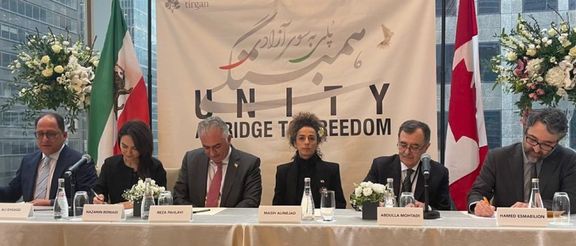
Prominent Iranian opposition figures who have joined hands to create a united front against the Islamic Republic held another event reiterating determination to end the regime.
Exiled Prince Reza Pahlavi, Canada-based activist Hamed Esmaeilion, whose daughter and wife were killed in the shooting down of Flight PS752 by Iran’s Revolutionary Guard in 2020, as well as US-based, journalist and women’s rights activist Masih Alinejad, actress and activist Nazanin Boniadi and Secretary General of Komala Iranian Kurdish party Abdullah Mohtadi held a panel in Toronto, Canada, on Saturday to discuss Iran's democracy movement.
They also delivered speeches during the street events held on the sidelines of the meeting, titled “Unity; A Bridge To Freedom.”
The group, which calls itself the Alliance for Democracy and Freedom in Iran, announced its existence in a February event at Georgetown University's Institute for Women, Peace and Security (GIWPS) -- titled ‘The Future of Iran’s Democracy Movement' and issued a Charter of Solidarity and Alliance for Freedom (Mahsa Charter) earlier in March.
Defending the contents of the Mahsa Charter, Mohtadi talked about “the spirit of pluralism” as a necessity to overthrow the Islamic Republic. He pointed out that the charter is based on minimum common grounds to defend the rights of minorities and ethnic groups, which paves the way for a transition from the Islamic Republic. He noted that the united opposition is trying to have a coalition as inclusive as possible.

Prince Pahlavi reiterated his ideas for a democratic Iran, stressing the need for joint efforts to hold a free election in the country. "The first rule of the democratic system is to respect the ballot box,” he said.
"I firmly believe in the power of the people. Let us not underestimate the power of public opinion, because it creates the necessary motivation to feel responsible and accountable," the exiled prince said.
He said the Iranians inside the country as well as the expatriates should prove to the world that the overthrow of the regime would not leave a power vacuum in the country. “Iran will not become Syria, because we have so many capable and efficient experts inside and outside the country."
He also talked about supporting the labor strikes as the most important factor to put pressure on the regime from inside Iran, adding that experts are examining ways to create a fund to support strikes and create channels to transfer money to the striking workers.
During his speech to a crowd of Iranians who had gathered outside the venue, Pahlavi greeted Nowruz – the Persian new year that started on March 21 – expressing hope that the next Nowruz celebrations would be held in Iran, free of the regime. "We hope this will be the last Nowruz in exile and we Iranians can celebrate freedom in our own country."
Alinejad, who is known for her frank and practical views about the regime, also defended the Mahsa Charter, acknowledging that a lot of people criticized its content for some phrases that seemed not to reaffirm the territorial integrity of Iran. Emphasizing that "the most separatist person" in Iran is Supreme Leader Ali Khamenei, she said, "We have gathered together based on the minimums and we are at the beginning of a union to show a more pluralistic face of Iran."
"None of the members of the Alliance for Democracy and Freedom in Iran claim a 100-percent agreement, but we understand the power of solidarity," she said, accusing the Islamic Republic of sowing discord among the opposition to ensure its survival. "Islamic Republic has survived by separating us and turning us into wandering islands,” she added, noting that the regime has labeled Kurds and Baluchis of separatism, but Kordestan and Sistan-Baluchestan provinces have become symbols of unity representing the voice of the Iranian nation.
Esmaeilion talked about mechanisms to contact representatives of other groups and ethnicities in the united opposition front, highlighting that “this revolution will bear fruit with unity and hope.” "There is no room for despair,” he noted.
Boniadi addressed the artists and celebrities who have stood against the regime, saying that “you are our role model; we are with you, and we fight for you."